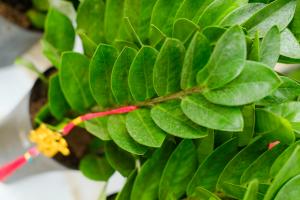Do Plants Take Nutrients from Water or the Sediment Particles
Plants are autotrophs, meaning they produce their own food through the process of photosynthesis. In order to do so, they require nutrients, primarily in the form of nitrogen, phosphorus, and potassium. These nutrients are needed for various metabolic processes, including the production of proteins, enzymes, and chlorophyll. But where do plants get these nutrients from? Do they take them from the water or the sediment particles?
Nutrient Uptake from Water
One of the primary ways in which plants acquire nutrients is through the water in which they grow. Plants have specialized organs called roots, which absorb water and minerals from the soil. The nutrients are transported through the xylem, a network of tissue that runs from the roots to the leaves, where the nutrients are used for photosynthesis.
The amount of nutrients present in the water can vary depending on a number of factors, including the type of soil, the amount of rainfall, and the amount of organic matter present. In general, water that is rich in nutrients, such as water from a river or lake, can provide ample resources for plant growth.
Nutrient Uptake from Sediment Particles
While water is an important source of nutrients for plants, it is not the only one. Plants can also acquire nutrients from the sediment particles in which they are rooted. Sediments are the accumulation of organic and inorganic material, such as decomposed plants and rocks, that settle at the bottom of a body of water.
When plants root in the sediment, they are able to access the nutrients that are present in the organic matter. The roots can also release compounds that break down the organic matter, releasing more nutrients into the environment. Thus, plants can not only take nutrients from the sediment particles, but they can also influence the nutrient content of the sediment itself.
The Importance of Nutrient Balance
While plants require nutrients to grow and function, an excessive amount of nutrients can be detrimental to both the plant and the environment. The process by which excess nutrients, particularly nitrogen and phosphorus, enter aquatic ecosystems is called eutrophication. Excessive nutrients can lead to excessive algae growth, which can cause oxygen depletion and potentially kill fish and other aquatic organisms.
Thus, it is important to maintain a balance of nutrients in aquatic ecosystems. This can be achieved through a number of strategies, including reducing nutrient inputs through agricultural and waste management practices, increasing vegetation cover to absorb and utilize excess nutrients, and controlling the introduction of exotic species that can upset the nutrient balance.
The Bottom Line
Plants are capable of acquiring nutrients from both water and the sediment particles in which they are rooted. While an excessive amount of nutrients can be detrimental to both the plant and the environment, a balance of nutrients is necessary for healthy aquatic ecosystems.
Understanding the sources of nutrients for plants and the impacts of nutrient inputs can help to inform practices that promote sustainable aquatic ecosystems.

 how many times do yo...
how many times do yo... how many planted tre...
how many planted tre... how many pine trees ...
how many pine trees ... how many pecan trees...
how many pecan trees... how many plants comp...
how many plants comp... how many plants can ...
how many plants can ... how many plants and ...
how many plants and ... how many pepper plan...
how many pepper plan...
































